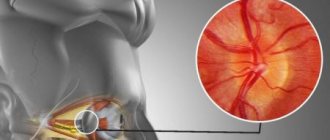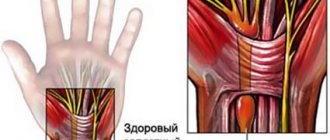Addiction. Addictive behavior is an area of study for psychologists. Thanks to their work, the very essence of addictive behavior, its types are described, and specific ways to overcome it are proposed.
Addiction in a broad sense is defined as an individual’s obsessive need to perform certain actions, rituals, and behaviors. Synonyms include the words “dependence,” “dependent,” or “addictive behavior.”
A habit is not an addiction! Habitual actions help a person quickly navigate the environment and turn off consciousness when performing routine duties. The habit does not harm life, but helps.
Addiction
For example, the habit of washing hands before eating. There are also bad habits (a person bites his nails when he thinks). This behavior still does not cause global harm to a person.
Another thing is that people often use terms incorrectly. For example, smoking is called a bad habit. This is wrong, because... such behavior causes significant harm to a person, it is difficult to get rid of it, which means it is already an addiction.
Classification of addictions
There are chemical and non-chemical forms of addictions.
Non-chemical ones include:
- Gambling
- Sexual addiction
- Love addiction
- Relationship addiction
- Work addiction
- Addiction to spending money
- Urgent addictions
- Internet and computer addiction
An intermediate place between chemical and non-chemical addictions is occupied by food addiction (bulimia, anorexia), since in this form of addiction biochemical mechanisms are directly involved.
I would like to clarify two of the above terms—relationship addiction and urgency addiction.
Relationship addiction is characterized by a person’s habit of a certain type of relationship. Relationship addicts (relationship addicts) create, for example, an “interest” group. Members of this group constantly and with pleasure visit each other, where they spend a lot of time. Life between meetings is accompanied by constant thoughts about the upcoming meeting.
Urgent dependence (urgent addiction) manifests itself in the habit of being in a state of constant lack of time. Being in some other state contributes to the development of a person’s feelings of despair and discomfort.
How is drug addiction treated?
Therapy carried out to eliminate drug addiction is based on the degree of dependence and the type of drug. The main factor here is the will and readiness of the person to recover. To strictly adhere to the recommendations of a specialist, inpatient treatment is necessary, including a full complex - psychotherapy, cleansing the body, prescribing medications, physical therapy, and occupational therapy.
During treatment, the daily dose of the dependent drug is regularly reduced until it is completely abandoned or replaced with a less complex one. Then the underlying disease and internal organs affected by drug addiction are treated. First of all, these are the liver, kidneys, and nervous system. Psychotherapy is aimed at getting rid of depression and the desire to start taking medications again, which led to addiction.
Drug addiction is very difficult to treat. The sooner drug addiction is diagnosed, the more likely a complete cure is, and the damage done to the body will be minimal.
The basis of rehabilitation is the participation of relatives, attending group or individual therapy classes. The person cured should be under the supervision of a psychotherapist. It is necessary to strictly follow all the doctor’s recommendations upon discharge and continue to engage in exercise therapy.
It is necessary to avoid increased nervousness, anxiety, and depression. Then the desire to resort to medications will not arise.
Chemical addictions
Chemical addictions involve the use of various substances that alter mental state. Many of these substances are toxic and cause organic damage. Some substances that change the mental state are included in the metabolism in the body so that the person dependent on them uses them first to change the mental state, and then to maintain his life.
Chemical addictions include:
- Alcohol addiction (dependence)
- Drug addiction opium addiction;
- dependence on cannabis (marijuana, hashish, anasha, etc.);
- addiction to hallucinogens (LSD, psilocybin (found in some types of mushrooms), mescaline (found in peyote cactus), harmine, harmaline, ibogin, amphetamine substitutes);
- cocaine addiction;
- heroin addiction;
- dependence on sedatives, hypnotics and other medications;
- dependence on stimulants (phenamine and substances similar in their effects to phenamine).
- Substance abuse
- Caffeine addiction
- Nicotine addiction
I will not talk in detail about all types of addictions.
I’ll tell you only about two addictions that are relatively new to Russia and are rapidly spreading in the conditions of modern life - workaholism and food addiction. See my articles “Workaholism” and “Eating Disorders.”
With respect and best wishes, Irina Letova. Copyright for the content of the text is reserved. © 2005 Irina Letova. All rights reserved.
When writing this article, we used some materials published in the following books:
1. Clinical psychiatry, ed. T. B. Dmitrieva 2. Ts.P. Korolenko, N.V. Dmitrieva, Sociodynamic psychiatry 3. Claude Steiner, Treatment of alcoholism
Symptoms
Many people daily use various medications necessary to normalize their mental or physical health. Manifestations of addiction are:
- slight or severe pain;
- vegetative crises;
- increased nervous excitement;
- slowness of action;
- blood pressure disorders;
- lack of strength, lethargy, sleep disturbance;
- changes in blood tests.
The listed symptoms appear when the regimen and amount of the drug used are violated. You should consult a doctor immediately.
Workaholism
Modern workaholism is inextricably linked with the characteristics of the organizations in which workaholics work. These organizations encourage workaholism and strive to occupy the employee’s time so that he does not think and does not strive to understand what is happening within himself. For this purpose, extracurricular work is encouraged, and additional forms of activity not directly related to the production process are used (spending time together, social work, corporate events, etc.).
Such organizations that stimulate the development of workaholism among their employees are called addictive organizations. Here are some features of addictive organizations:
- Addictive organizations are characterized by perfectionism. It is expressed in the organization’s desire to be first, to be perfect, and most importantly in the requirement for employees not to make mistakes.
- The organization-level model is built on a quantitative mentality, which manifests itself in the desire to measure phenomena that are difficult, impossible or impractical to measure.
- The desire to control employees, the introduction of time sheets, the unspoken motto “Demonstrate hard work in the workplace” (instead of doing it using a creative approach). Endless checks and certifications of employees, distrust of them. All this is similar to the control of a dependent person (addict) by his family. As you know, the desire to control an addict does not produce positive results.
- The exploitation of promises in such an organization has the goal of “bringing” the employee out of the “here and now” state and fixing him on expectations, promising him a “radiant” future (promotion, salary increase, etc.). Such hope and the promise of starting a “new life” on Monday or the New Year is typical of addicts (addicts, alcoholics, drug addicts, etc.)
- An addictive organization tries to occupy a person’s time so that he does not think and does not strive to understand himself and what is happening. I already wrote about this above.
- An addictive organization (let me remind you, this is an organization that stimulates workaholism among its employees) in every possible way limits the realization of the abilities and talent of employees. This is due to the fear of everything that cannot be completely controlled. And talent cannot be controlled. As a result, conditions are created for stagnation and delayed development of both the organization as a whole and the qualifications and careers of employees. Addictive organizations objectively disable people, delaying their professional development, and therefore devaluing them in the labor market.
- An addictive organization ignores discoveries, intuition, and new ideas. What is difficult to measure and control is judged to be of no interest.
- There is a formula: the more addictive an organization is, the less successful it is. Addictive organizations are uncompetitive.
Now a few words about the reasons why an organization becomes addictive. There are quite a lot of such reasons, I will name only the most common ones.
- The key person in the organization is an addict (dependent on chemical substances, for example, alcohol, and non-chemical activities, for example, a workaholic or a gambling addict). His addictive behavior affects the activities of the entire organization and the people working in that organization. The first person with dependence (who is an addict) brings into the organization a certain style of behavior characteristic of him.
- Most of the organization's employees are addicts (people with addiction) and codependent individuals. Both addicts and codependents do in the organization, as well as in their families, first of all what they know how to do best, that is, show their addictive qualities. If an organization has exactly this problem, then the question arises: why does the personnel service select precisely such employees, and the first person of the organization approves their hiring. Addictive and codependent personality traits are quite easy to identify, especially for an HR manager, through whom thousands of people work and who must have a “trained” eye.
- The organization intentionally and consciously encourages workaholism as a desirable quality in employees. Such organizations have the illusion that workaholics are the best employees. In fact, this is completely wrong.
Types of drug addiction
Addiction to medications is divided into physical, psychological dependence, and withdrawal syndrome. Each stage has its own symptoms.
Physical
At this stage, a person, in order to avoid mental, neurological, vegetative-somatic disorders that occur when the drug is discontinued, continues to take medications without doctor’s recommendations. What leads to abstinence - deviations at the physical and psychological levels.
Mental
Taking pills becomes an obsession; a person is drawn to certain drugs that he uses for a long time. Occurs when there is a break in use or the introduction of substances that reduce the effect of the medication. The dose of the drug is increased.
Habit or drug problem
Today, drug dependence and drug addiction are combined. Both mental and physical passion for drugs can relate to both drug addiction and drug addiction.
Personal qualities of a person, social and financial status, and the availability of drugs that cause drug addiction also play a role in the formation of pathology.
This disease is differentiated depending on the drugs that are taken. There are these types of addiction:
- from morphine
- from barbiturates,
- from cocaine,
- nicotine,
- alcoholic,
- combined.
Morphine addiction
Description of the disease
Psychotherapists consider addiction a borderline state that occurs between normality and pathology. That is, the line is very thin. A person can completely lose reality by playing computer games or using psychoactive substances. The danger lies in the intensity of the emotions that a person receives from an invented way of life.
Attention! If you observe the first signs of addiction in yourself or your loved ones, do not delay going to a psychotherapist.
Prevention
To prevent addiction, you need to diagnose the problem in a timely manner. Social psychologists work in schools and universities who work with children and adolescents. It is very important to constantly inform about the dangers of smoking, alcohol, and drugs.
It is recommended to master different technologies on how to get out of a difficult situation. Of no small importance are exercise, which disciplines, improves mood and relieves depression.
If you notice a harmful addiction, consult a psychologist, he will conduct training for you, during which he will correct your personal behavior.
Thus, addiction is a serious psychological problem that is important to solve in a timely manner, otherwise the person will completely degrade and lose his “I”. Relatives and friends should not abandon the patient, but, on the contrary, try with all their might to support him. Only complex therapy can bring a person back to life and adapt him to society. Don't ruin your life by getting carried away with alcohol, drugs, gambling, be happy!
Symptoms
Expressed by combinations of symptoms caused by a single pathogenesis:
- Mental attack syndrome. It is caused by a painful need to take psychotropic medications, trying to eliminate discomfort and mental disorders that arise as a result of interrupting medication. Drug dependence in this case is not yet expressed in the form of withdrawal symptoms.
- Physical craving syndrome. Addiction is caused by tolerance and is characteristic of those who use opiates. In this case, addiction is determined by the likelihood of the formation of withdrawal syndrome due to a pause in taking medications or the introduction of antagonist substances.
- Withdrawal syndrome. Caused by sudden cessation of taking drugs that are addictive.
A clear symptom of the formation of drug dependence in a person is the appearance of a painful state as a result of stopping medication or reducing the dosage. The following signs are noted:
- painful sensations,
- mental disorders that are accompanied by panic attacks,
- increased agitation, agitation,
- lethargy, slowness,
- pressure failures,
- blood composition disorder.
Most people use medications daily. All symptoms of drug cravings appear immediately after stopping or disrupting the intake of the medicine on which the person is dependent. If there is a drug dependence of a mental or physical nature, you must immediately visit a doctor.
Ways to overcome
Overcoming and eliminating drug addiction is determined by the nature of the disease and the drug to which the addiction has developed. Main methods of treatment:
- Replacing addictive medications with similar ones, but with a gentler composition.
- Systematic reduction of the dosage of tablets until complete cessation.
- Psychological treatment that helps the patient recover from a stressful state. Having cured diseases associated with nervous and mental disorders, the need to use psychotropic drugs is eliminated.
- Overcoming and treating diseases caused by repeated stress in the patient (intracranial pressure, recovery period after an accident, postpartum depression or injury).
- Natural and artificial removal of toxins from the body as a result of drug addiction of a chemical nature. This method cleanses the body of toxic substances of the drug, which contributes to addiction.
- Treatment and restoration of the body.
The main thing to be wary of is the severity of excessive anxiety, irritability, and nervous tension. In this case, the urge and desire to weaken them with the help of drugs disappears, and the possibility of contracting a drug addiction disappears.
If you are faced with a similar problem, do not waste time: seek help from specialists, such a habit is detrimental to your health.








